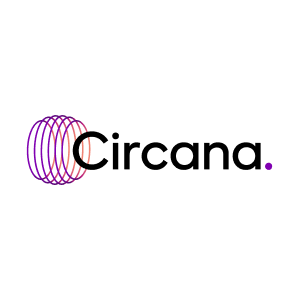- Circana

- May 21
- 5 min read
Updated: Jun 3
Circana's European Foodservice Market Data At A Glance:
Foodservice spend grew by +1% in Q1 across the Big 5 European markets
Digital channels, dinner occasions, promotions, and the return to office drive new growth opportunities for the restaurant industry
Insights By Market: Great Britain | Germany | France | Italy | Spain
May 14, 2025 – The Circana Group, which consists of Circana, LLC, and its subsidiaries and affiliates (“Circana”), a leading advisor on the complexity of consumer behavior, reports that the European restaurant industry closed Q1 of 2025 navigating a complex and volatile environment shaped by rising costs, economic uncertainty, and shifting consumer behavior.
As the cost of living crisis continues to impact household spending across the continent, the industry also faces heightened concern over U.S.-imposed tariffs on key trade partners. With price growth and geopolitical tension, industry players are increasingly worried about declining traffic and reduced consumer confidence, raising questions about the restaurant sector resilience in the months ahead.
Based on Circana’s CREST® consumer panel data, European foodservice traffic declined by -1% in Q1 compared to the same period last year, while consumer spend grew by +1% despite fewer visits, driven by an increase in average restaurant check growth.
“The industry is getting more competitive. However, there are common growth drivers observed in Europe that help to partially offset the traffic shortage and will drive future growth opportunities for those who take advantage of it.” - Edurne Uranga, VP Foodservice EMEA at Circana
Digital occasions, including Click&Collect & Digital Food Delivery, are responsible for 7% of the total traffic and grew by 7%
Dinner occasions outperformed the market and grew +1%
42% of all foodservice occasions include some kind of promo and grew by 2%
A growing return-to-office effects were seen resulted in +0.3% traffic growth of workplace and school canteens
Great Britain: Snacking Is Showing Double-Digit Growth
As the UK’s foodservice industry navigates ongoing economic pressures, one bright spot is emerging: snacking. According to new data from Circana, snacking occasions, especially in the afternoon and evening, are showing double-digit growth, up 13% and 14% respectively year-on-year (Circana, CREST®, YE March 2024), even as traditional meal occasions stagnate.
The shift is driven largely by younger consumers. Visits among 25–34-year-olds have surged by 23%, making them the primary force behind this change. In total, over 50 million visits have moved from traditional meals to snack occasions in the past year, including 30 million from lunch alone, and 10 million each coming from breakfast and dinner. (Circana, SnapMyEats®, YE March 2024).
“Snacking isn’t just a side note, it’s becoming the main event. As consumers rewrite the rules of how they eat, brands and operators that embrace this shift will be best positioned to win.” - Seton Leung, Head of UK Foodservice at Circana.
This evolving behavior is being fueled by more flexible lifestyles, remote work, and a desire for affordable yet satisfying options. In response, foodservice operators, from QSR chains and convenience retailers to fast-casual and full-service restaurants, are adapting with smaller product formats, all-day snack deals, and off-peak menus that help drive traffic and optimize kitchen operations.
For FMCG brands, this presents a timely opportunity to innovate and invest in snacking solutions that meet consumers where they are, both in mindset and moment.
Germany: Breakfast Continues To Be Growth Driver Due To Consumer Demand Among Young Adults
In Germany, the market gained +2% in consumer spending in the full year 2024 (+2%), there was a significant loss in guest visits of -2% driven primarily by price increases due to the rise in VAT in January 2024. Therefore, spend per visit grew by +5%.
“With the beginning of 2025, that effect has ended and more moderate price increases led to a more stable performance of the Germany restaurant industry,” - Jochen Pinsker, Foodservice Industry Advisor at Circana commented.
Over the past year, breakfast has been a growth driver for the German restaurant industry with increasing demand – especially from young adults – leading to +2% more visits in 2024 compared to the prior year. That time of the day already accounts for 2.6 billion foodservice occasions in the country. And this isn’t just a passing trend. Even before the pandemic, this time of day was already a key growth area, driven by social shifts such as the rise in single-person households and the growing number of women in full-time employment.
But there is a shift in the food and drinks that guests chose: The most important products for breakfast away from home remain hot drinks and sandwiches, although both are on the decline. These are being replaced by non-alcoholic drinks, baked goods and healthy breakfast alternatives. In terms of beverages, energy drinks are particularly noteworthy and are increasingly replacing coffee drinks, especially among teenagers and young adults. In the baked goods segment, pretzels are enjoying above-average growth. “Muesli and cereals saw double-digit growth, reflecting consumers’ growing preference for healthier options,” Pinsker added.
France: Global Uncertainty Has Impacted Foodservice Traffic, But There Are Opportunities in Digital Occasions
As in the rest of Europe, French foodservice traffic declined by -1% in Q1 2025 compared to the previous year. However, a +0.5% increase in the average check helped offset the overall drop in consumer spending.
“The French foodservice industry has been affected by global uncertainty, stemming from international events such as the U.S. election, and domestic political shifts, contributing to a subdued start to the year." - Maria Bertoch, New Business Development Director at Circana France.
However, certain growth drivers in France are helping to partially offset the decline in traffic such as Digital occasions (Delivery + Click&Collect) represented 8% of commercial foodservice traffic and grew by +5 % vs Q1 24. In France, certain areas of the foodservice industry are showing signs of recovery. Ready-to-eat food and beverages for immediate consumption in regular retail outlets saw a 4% increase in traffic year-on-year. Meanwhile, after a difficult year, lunch, an important consumption occasion for the French foodservice sector, returned to growth in Q1 2025, driven by collective catering. As one of the most affordable out-of-home dining options for French workers, with an average lunch check of €5.50, collective catering continues to play a key role in supporting the industry.
Italy: Consumers Look For Convenient, Ready-To-Eat Products
Out-of-home consumption progressively slowed over recent months. In the first quarter of the year, visits declined by -0.7%, accompanied by strong trading-down behaviour. Lunch and dinner occasions saw a -1.5% drop in visits, while lower-spend occasions such as breakfast recorded positive growth.
“The consumer carefully selects occasions and products to consume out of home. In general, the average number of items consumed decreased resulting into negative trends in accessory components such as side dishes and beverages. Only low-priced products such as coffee, baked goods and sweet snacks are growing.” - Matteo Figura, Foodservice Executive Director at Circana Italy.
The current consumer behavior generally benefits chains as well as retail where ready to eat products are perceived as a convenient choice. The first quarter of the year has been affected also by the more restrictive measures in driving and alcohol consumption introduced in December. Wholesaler beverage sales registers a negative trend in volume for the total category of -4.0% in YTD February driven by Beer (- 8,6%) and Spirits (-8,0%).
Spain: Breakfast Spending Increased Due To Return To Office Routines
In Spain, during the first quarter of 2025, consumer spending in the foodservice sector increased by +1.5%, driven by a +2.1% rise in average spend per visit, despite a -0.6% decline in traffic compared to the same period last year, according to data from the CREST® consumer panel.
This drop in traffic was partly due to the timing of Easter, which fell in the last week of March in 2024 but shifted to April in 2025. Additionally, April 2025 was one of the rainiest months since 2018, according to AEMET (the Spanish Meteorological Agency).
Nevertheless, certain consumer behavior trends outperformed the overall market results during this first quarter:
Breakfast occasions saw a spending increase of over 11%, supported by a 4.6% rise in visits, closely linked to the return to office routines, and higher average spend.
Adults over 35 without children increased their total foodservice spending by +3.7%, gaining 1.1 percentage points in share of total sector expenditure.
“In such a competitive market as foodservice, having clear and detailed insights into consumer trends is key to designing winning strategies,” - David Domínguez, Foodservice Director for Spain at Circana.


































